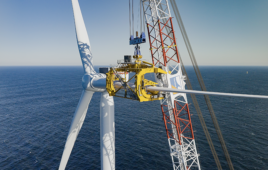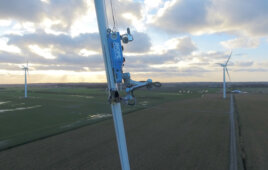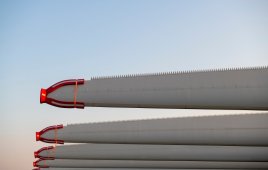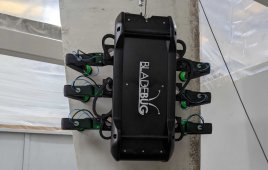This article comes from the Fraunhofer Research News / 1.3.2018
The share of the overall electricity market made up by wind energy continues to grow year after year. The giant rotor blades are one central part of a turbine. In the “SmartBlades” project, the Fraunhofer Institute for Wind Energy Systems IWES and its partners developed a rotor blade, which, thanks to an innovative bend-twist coupling, is able to make more efficient use of large fluctuations in wind strength. In the follow-up project “SmartBlades2”, the concept will undergo experimental tests using a demonstrator.
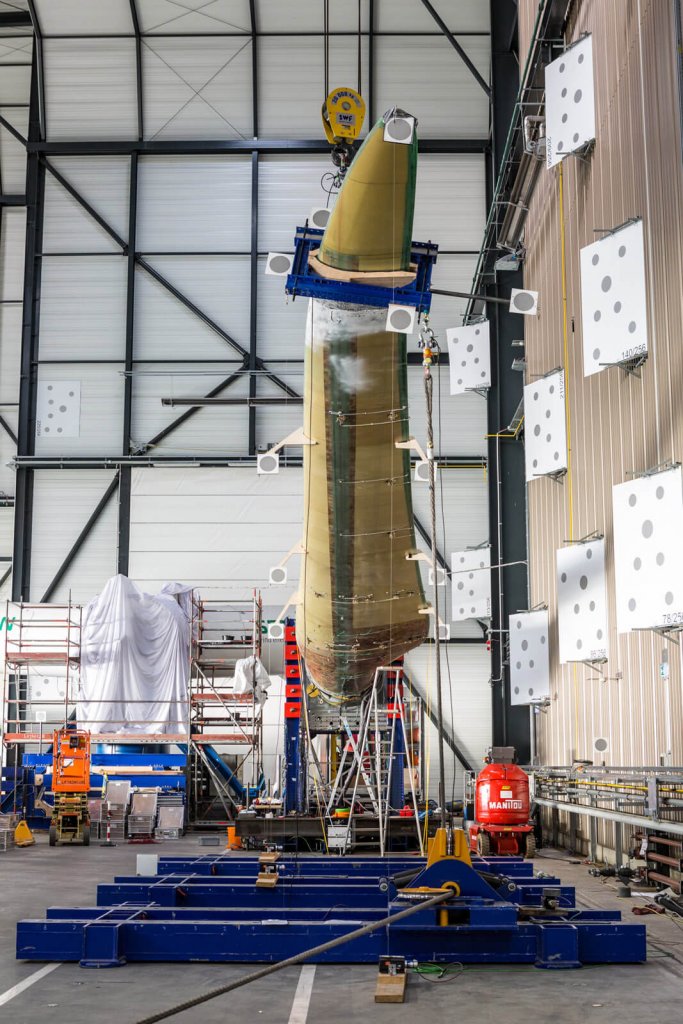
The BTC blade in the extreme load test: The loads are applied via three hydraulic cylinders.BTC blade in the extreme load test: The loads are applied via three hydraulic cylinders.
More than 28,000 wind turbines with a total output of 50 gigawatts are currently in operation in Germany: This equates to a 12.3% share of the total electricity production in Germany in 2016. This figure places the German wind energy sector at the top of the European league table, as confirmed by the German Wind Energy Association’s data. The current focus of research is now on developing this technology even further. And the Fraunhofer Institute for Wind Energy Systems IWES, based in Bremerhaven, is leading the way here. Within the framework of the joint “SmartBlades2” project, researchers have turned their attention to the bend-twist coupling (BTC) concept for rotor blades. The passive working coupling adapts continuously to the wind forces acting on the rotor blade. When the wind loads become too high, the bend-twists reduces the forces affecting the structure.
The rotor blades of conventional wind turbines react to changing wind strengths very slowly. A rotor blade measuring up to 85-meters long describes a circular area of 22,670 m², that’s the equivalent of four soccer pitches. The wind strengths within this area can vary greatly. The pressure acting upon the blade pointing upward, for example, can be very different from the pressure on the lower blade. Conventional rotor blades cannot compensate for a single gust of wind as they are too rigid to twist. This means if there is a gust when the wind is already strong, the turbine operators turn the rotor blades completely away from the wind. This results in long downtimes during which no electricity is produced.
“The demonstrator BTC blade developed as part of this project is swept back whilst the blade tip is offset slightly to the rear in the direction of rotation. The 20-meter-long rotor blade is therefore able to rotate slightly around its own axis should strong gusts occur in order to mitigate the wind pressure to a certain degree,” explained the IWES technology coordinator for BTC blades, Dr. Elia Daniele. This reduces the forces acting upon the blade and, ultimately, the entire turbine. By using BTC blades on a newly planned wind turbine, the overall turbine weight can be reduced as the structure is subjected to lower loads. In case of existing turbines, the retrofitting of BTC blades allows the rotor diameter to be increased without having to adapt the other turbine components. This results in an increase in revenue thanks to a greater wind yield.
Testing under realistic conditions
For the rest of the article: https://goo.gl/TgYfnb
Filed Under: Blades

